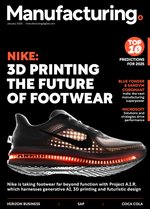Dassault Systèmes: Why ERP, MES, & IoT Should Work Together

As we go forward into the era of Manufacturing 4.0, or the Fourth Industrial Revolution, we risk overestimating what IoT can accomplish. Sensors, robotics, predictive analytics, edge computing, real-time feedback—we admit, it’s a glorious sight to behold. But manufacturers who think that IoT can supplant every digital system we’ve used for the past decade have fallen under the spell of a mirage. ERP (Enterprise Resource Planning) and MES (Manufacturing Execution Systems) were built with their own set of strengths.
The Legacies: ERP and MES
Ancient doesn’t always mean obsolete. From manufacturing to purchasing, accounting, and HR, ERP systems are excellent at distributing information across the many divisions of your business. In comparison to ERPs, MES systems are more focused on the factory floor and manufacturing-specific operations. But both have excellent security and large stores of data. Therefore, while IoT is specialised, automated, and able to adjust operations on the fly, it’s not a replacement.
Together, ERP and MES can communicate across divisions, handle more diverse analytics, and offer secure ways to store lots of data. Why throw legacy systems out with the rubbish?
What Does IoT Integration Look Like?
‘If systems aren’t clearly explained’, said Mary Shacklett in TechRepublic, ‘there’s a risk that people could expect more out of IoT than it can deliver’. According to an Accenture survey, 84% of businesses report that they can increase profit streams with IoT. In 2020, manufacturers were projected to spend US$267bn on such devices. But as Yuval Lavi, Vice President of Technology and Innovation at Magic Software Enterprises, said in IndustryWeek, integrating ERP, MES, and IoT systems can yield the greatest benefits.
That’s why it’s helpful to learn from companies that have integrated the three systems. Take Dassault Systèmes, for example. The firm recently introduced a single database (DELMIAworks) to map data from office-based ERPs to shop-floor MES. The new platform uses IoT to monitor its production systems but doesn’t rely on it as the end-all-be-all of advanced manufacturing. Instead, it uses IoT data to improve legacy analytics.
‘This way, we can follow real-time production and quality tracking, performance management by work centre, inventory valuation, and inventory tracking’, said Chintan Shah, CFO of Shaily Engineering Plastics Limited. ‘Such a high level of collaboration calls for a single digital environment’.

